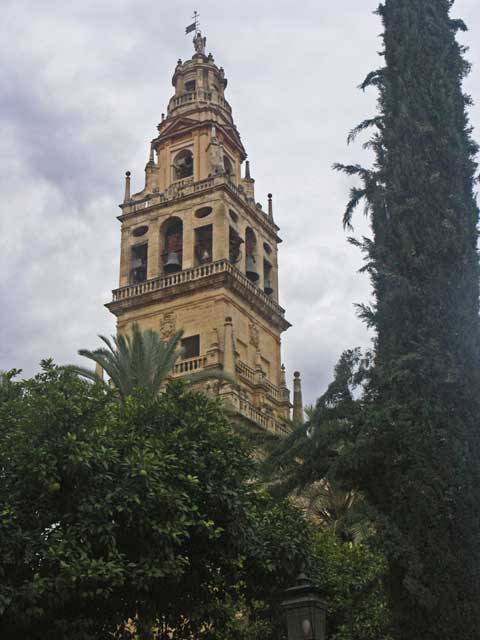
The bell tower of the Mezquita.

Well, we didn’t do dessert after all and went to bed instead, after reading a bit.
After breakfast, we sallied forth only to duck back to the hotel for some precautionary rain gear – gear ultimately not needed.
Our first goal was the Mezquita, the Mosque/Cathedral of Córdoba. When we got there a bit after ten, we realized that it was All Souls Day and the Cathedral was actually in use! We figured out that it would be open at 1400 so we went to the Alcázar de los Reyes Cristianos – the Fortress of the Christian Kings. We wandered about the building, which was built on a previous building dating back to Roman times. The palace/fortress was one of the sites of the Inquisition. Adjacent to the palace is a series of gardens, Italianate in flavor, that had been added in the past 100 – 200 years. These were pleasant, but not that remarkable. Being “fortressed-out”, we moved on.
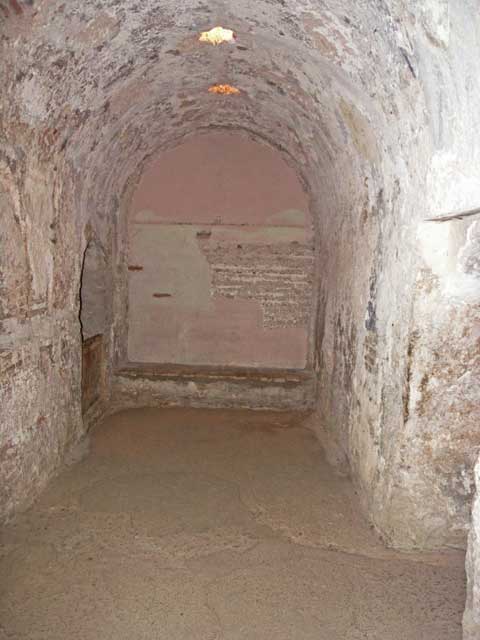
One of the low cells below the fortress. Jonathan speculated that they might have kept prisoners here.
We went on to the Archeological Museum (which we had located earlier after discovering the Mezquita was not open yet), which remained resolutely closed. We made lunch out of tapas at a bar / restaurant in the square outside the museum and sat the enjoying a leisurely experience waiting for 1400 to arrive. At that time, the museum remained closed, so we returned to the Mosque, paid our admission and entered the building.
The Grand Mosque of Córdoba has to be one of the most unique pieces of architecture in the world. The prevailing Moslem architecture of the day starting in 785 with local influences with three successive expansions followed by the construction of a cathedral, within the mosque itself, resulted in a building unmatched anywhere in the world.
The corner where you enter the building is dark and dimly lit from panels to your left letting in the natural light. Chandeliers with dim orange bulbs, simulating candles or oil lamps provide subtle lighting. It really emphasized the entry into a different world. The famous red and white arches march away down lines of perspective with pools of light from other features.
We frequently used the pillars to brace our cameras as we took pictures because the low light was requiring some long shutter times (and therefore the risk of blurry photos). I commented to Jonathan that we looked like a pair of tree-huggers when we were up close and personal with the columns.
The cathedral has been plopped down smack dab in the middle of the mosque, so we walked around the edges where the remnants of the original architecture are strongest, before exploring the cathedral itself. As is typical with the cathedrals of Europe, various chapels lined the edge of the building – in this case, blocking the original horseshoe-arched doors of the mosque.
In the center sits the cathedral clad in white marble with an elliptical dome and high windows admitting the afternoon light – a stark contrast to the stonework and masonry in the dim portion of the mosque with its forest of columns and arches. Where the cathedral exalts its function with ornamentation, the mosque uses repetition.
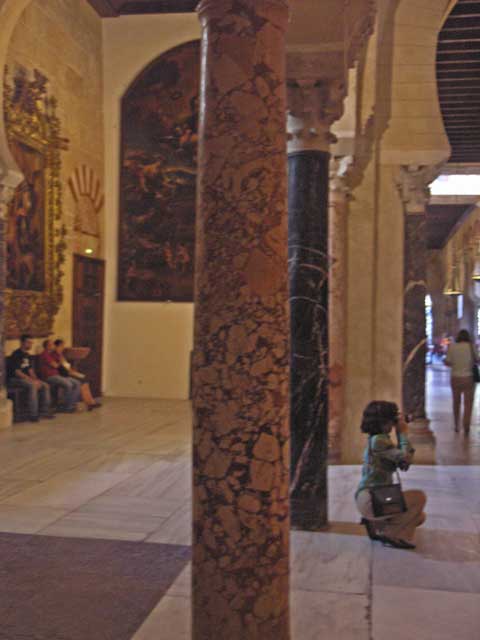
The columns are different stone - nearest medium rose color, next one is dark, and the one beyond that is light.
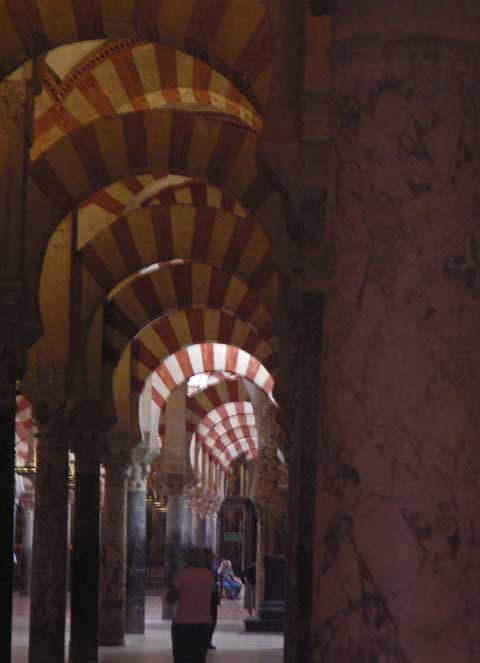
The areas of light from the cathedral's clerestory windows, which brought in a fair amount of natural light.
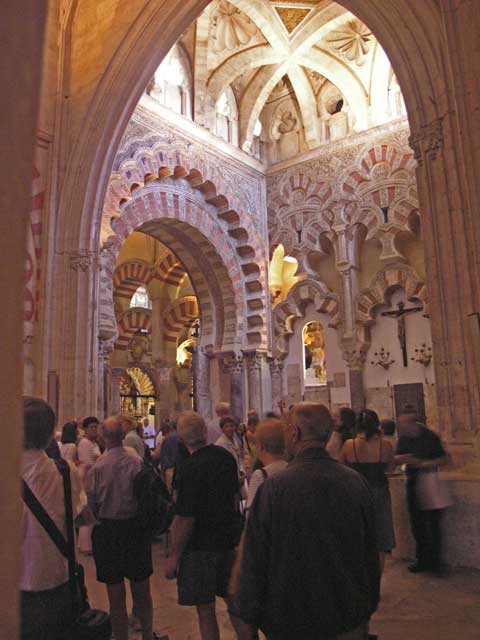
It appears as if the designer of the cathedral used elements from the mosque to ease the transition.
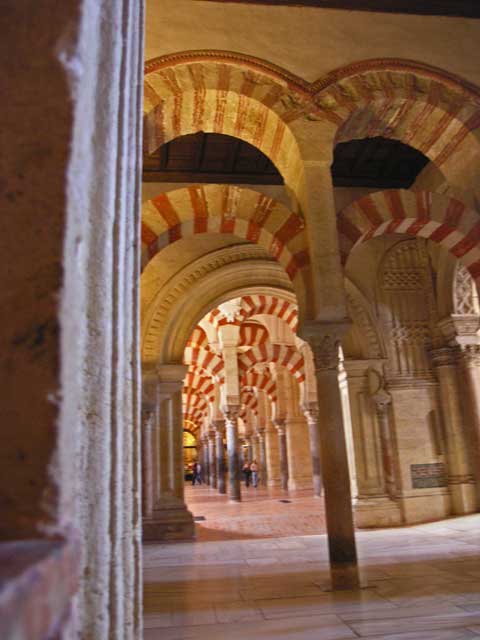
Another contrast - the red and white arches of the mosque with an arch of the cathedral between them.
We left the mosque and walked across the street to where we had some ice cream. While there I read the church brochure I picked up going into the mosque and started reading. Yeesh - talk about defensive! The bulk of the brochure seemed to be an apologia for taking over the mosque for Christian worship (the standard procedure during the Reconquest for both mosques and synagogues) while taking the attitude of “he did it first,” citing the Visigoth structure that the Moors had replaced with the mosque.
From there we meandered back to the hotel for a little siesta and reading. At 1800, we came down to the bar for our glass of wine and diary time.
After our drink we walked one last time across the river to a restaurant just on the other side. We sat outside watching the people and traffic go by. We got there around 1930 and were among the first to sit down. By the time we left around 2100, all the tables were full. I had a paella that was good but not exciting. At a table – more accurately a barrel – next to us were three men, one who was quite boisterous and judging by the reactions of the women walking/driving by, was calling out some tart or salacious remarks – none of them we understood. He started talking to Jonathan who shrugged and said (in Spanish) that he didn’t speak the language. Afterwards we hoofed it back to the hotel for the evening.
